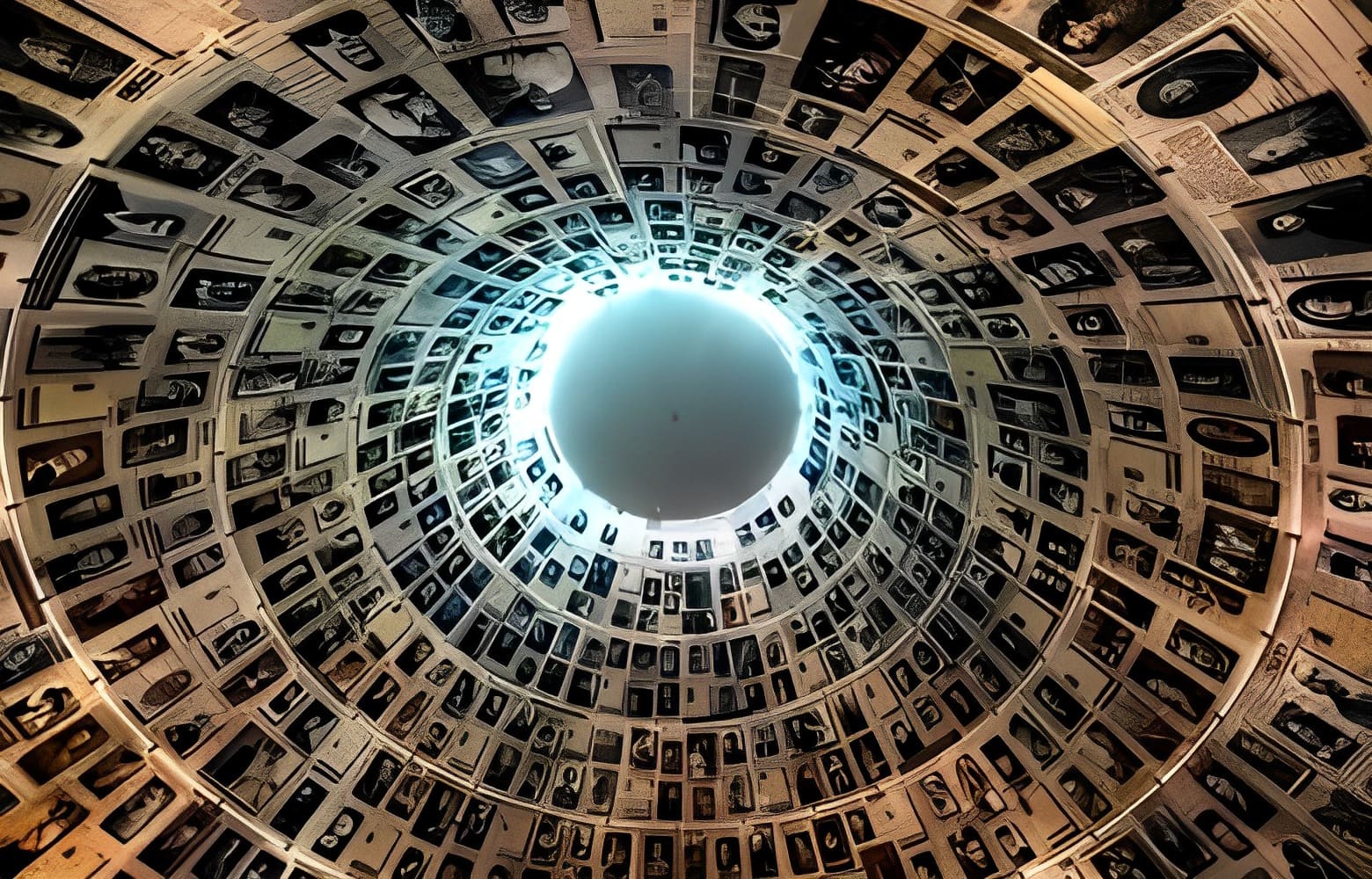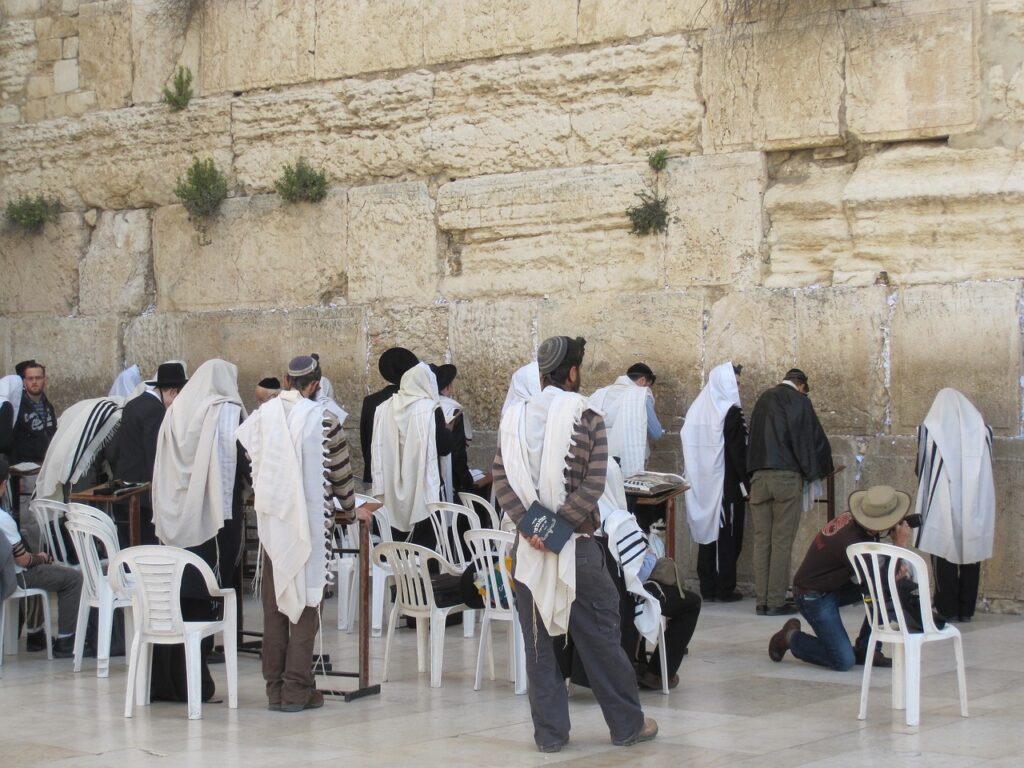An Upsherin, the first haircut for a Jewish boy at...
Read MoreMonuments, whether sculptures, pillars, or sites, serve as enduring reminders of historical events. In Israel, a selection of Holocaust memorials achieves dual purposes: preserving the memory of the past and imparting lessons for the future. Each structure, meticulously crafted, symbolizes the atrocities of the Holocaust and stands as a testament to resilience and remembrance.
Plan it israel has bifurcated 7 Holocaust Museums & Memorials in Israel.

Yad Vashem
Yad Vashem, established in 1953 by the Law of Remembrance of Shoah and Heroism, stands as Israel’s solemn commitment to Holocaust remembrance. The first monument, the Hall of Remembrance, built in 1961, is a poignant tribute to the six million victims. Designed by Arieh Elhanani, its basalt rock structure, adorned with a pyramid-shaped roof, houses the eternal flame and ashes of unnamed victims. Symbolizing collective mourning, its austere design evokes a battlefield, emphasizing the enormity of loss. Serving as the State Cenotaph, it welcomes dignitaries, ensuring the Holocaust’s memory endures, embodying Isaiah’s promise of everlasting remembrance.
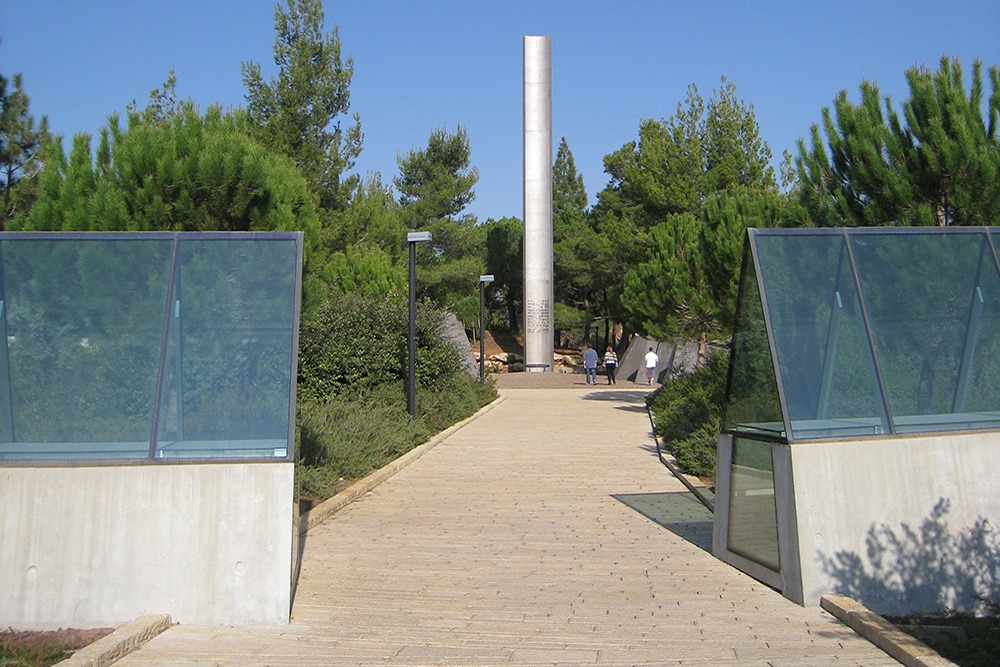
The Pillar of Heroism
The Pillar of Heroism, designed by Buky Schwartz in 1970, stands as a towering tribute at Yad Vashem. Rising 21 meters high, its stainless steel panels evoke the somber image of death camp chimneys, honoring the martyrs, fighters, and survivors of the Holocaust. Erected after Israel’s Six-Day War victory in 1967, it symbolizes defiance against oppression. Its inscription, emphasizing physical and spiritual heroism, immortalizes those who resisted tyranny. This monument, with its three-sided structure, embodies courage and resilience, serving as a timeless reminder of the human spirit’s triumph over adversity and the enduring legacy of those who sacrificed for freedom.
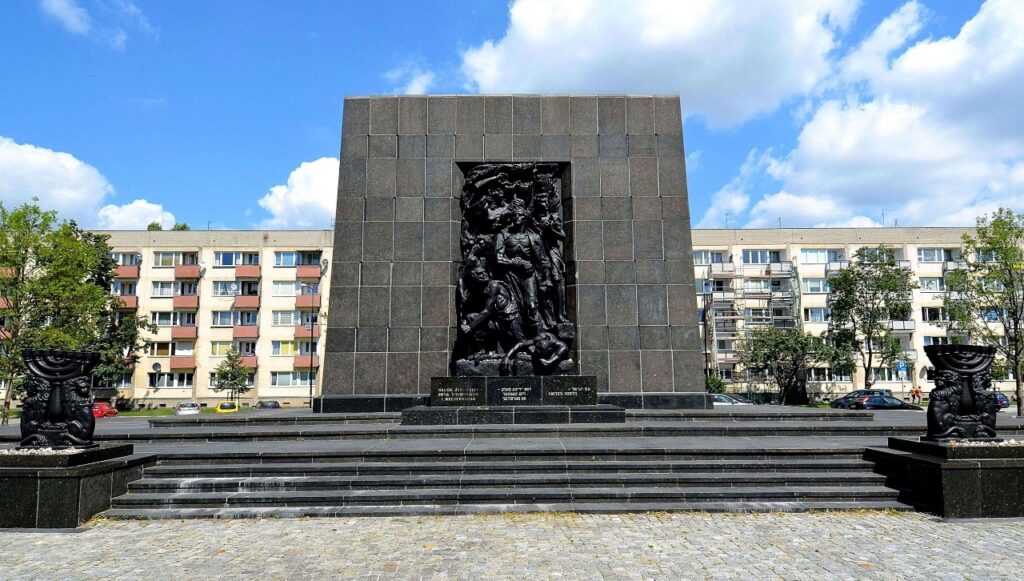
The Warsaw Ghetto Monument
In 1973, Yad Vashem sought an appropriate venue for the Holocaust Remembrance Day ceremony. The plaza now houses a replica of Nathan Rapoport’s Monument to the Warsaw Ghetto, originally erected in 1948. This rendition, completed between 1975 and 1976, features two bronze reliefs mounted on a red brick wall symbolizing the ghetto’s barriers. Inscribed with “In your blood you shall live” (Ezekiel 16:6), it vividly depicts the horrors of the Holocaust. One relief portrays the heartbreaking scenes of deportation to extermination camps, while the other depicts the courageous Warsaw Ghetto Uprising. The monument starkly contrasts the heroism of resistance with the tragedy of mass extermination, ensuring the enduring memory of bravery.

The Children’s Monument
Yad Vashem commissioned Moshe Safdie in 1976 to create a memorial for the 1.5 million children lost in the Holocaust, dedicated in 1987 with funding from Abraham and Edith Spiegel. A hill adorned with white tree-like posts of varying heights represents the children’s lives cut short at different ages. A passage leads to an iron door, beside Uziel Spiegel’s relief, opening to a dim underground chamber. Nine children’s photos greet visitors, with a glass case holding five candles at the room’s center. Mirrors reflect the candlelight, creating a starry effect, while somber music and multilingual voices recite the children’s names and origins.

The Gal-Ed monument
The Gal-Ed monument, erected by S. Bernstein and N. Shtark in 1965-66, stands as a testament to the horrors of Treblinka, the infamous Nazi death camp. Composed of a heap of stones with an opening, it bears the name Treblinka prominently. Scattered stones around the mound, reminiscent of the Jewish custom of leaving stones on graves during visits, are separated by strands of barbed wire. Beneath a large stone lies human remains brought from Treblinka in 1963 by Rabbi Yedidiya Frenkel, then Chief Rabbi of Tel Aviv. Covered by an iron door resembling those of the camp’s crematoria, it solemnly reads:
“Remains of the bones of 800,000 Jews, may God avenge their blood.”
Also Read: Best Kosher Vacation Spots to Visit Now
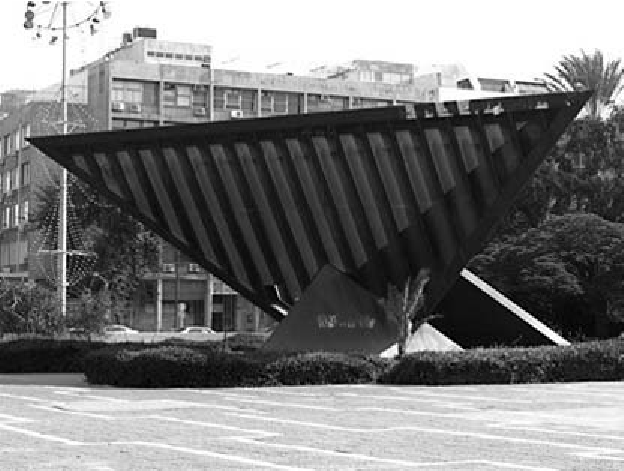
The Holocaust and the Revival
After the Six-Day War, Jewish organizations, mainly in the US, spearheaded the funding and construction of Holocaust monuments in Israel. These often feature a Torah scroll as a central motif, symbolizing unity among Jewish communities worldwide. The Scroll of Fire, near Moshav Kisalon (1971), depicts Holocaust tribulations and Israel’s early years. Danny Caravan’s To the Holocaust monument at the Weizmann Institute (1972) presents a broken Torah atop a stone base, with cascading water representing tears. Engravings recall victims’ names, camp numbers, and the Shema prayer.
The Holocaust and Heroism
The Hebrew Holocaust remembrance day, 27th of Nissan, coincides with the Warsaw Ghetto Uprising (April 19-May 16, 1943), a symbol of Jewish heroism. Kibbutz Yad Mordechai houses the first monument honoring the uprising, dedicated to Mordechai Anielewicz, a commander. Nathan Rapoport’s sculpture depicts Anielewicz as a determined kibbutz member, holding a grenade, evoking Michelangelo’s David. Positioned near a war-damaged water tower, it links the uprising’s heroism with the kibbutz’s resilience against the Egyptian army. Daliah Meiri’s 1977 monument at Moshav Moledet merges Holocaust and fallen IDF soldier commemorations, highlighting Israel’s existence due to this legacy of heroism.
Conclusion
In conclusion, these monuments, through their unique shapes and styles, convey powerful messages, ensuring that the horrors of the past are never forgotten. They inspire a commitment to prevent such atrocities from recurring and stand as solemn guardians of memory.
Their presence urges present and future generations to strive for a more just world, serving as enduring reminders of the importance of remembrance and vigilance.
These monuments symbolize a collective resolve to honor the victims and survivors of historical injustices, fostering a continuous dedication to building a brighter and more compassionate future for all.
Thank You!
Inquiry: 718–360–9445
Email: info@planitisrael.com
Website: https://www.planitisrael.com/
Address: Plan It Israel LLC, 24 Sherman street, Johnson City, NY 13790

